Four of our six Seattle neighborhood Ospreys returned last week from the long haul of their migration. If you haven’t seen the tracking maps showing Osprey travel routes, take a look at this website: Osprey migration maps. For these studies, Ospreys are fitted with light satellite transmitters that fall off after two to three years. In the time before the Ospreys lose the transmitter, researchers gather data about their final destinations and their various stops along the way.
Our Seattle Ospreys aren’t wearing transmitters so I don’t know precisely where they migrated or wintered this year — Mexico or Central America or beyond. But, I do know they endured hardship to be with us again … to follow the trail and call of all Ospreys who came before, and to indulge the drives that bring them homeward to raise their young.
There are miles under their wings, and there are challenges to overcome — of wind and weather, fishing monofilaments, and fish farmers who fancy them none. Knowing what lies before all birds as they embark on migration it’s with pure relief and respect that I welcome them back — choking up with sentimentality, I don’t mind saying. After all these years, I still can’t watch Winged Migration without some tears.
Be well, my winged friends. We’ll look out for you while you’re here.
My first photo of this year’s Osprey season. The male here is perched on a railroad bridge next to his nesting platform in a public park. Often in Seattle, the looking upward pose signifies a Bald Eagle overhead. (Photos shot handheld with my Olympus OM-D + Lumix 100-300mm.)
My second photo shot on a rainy day, with the female looking on as the male arranges sticks in the nest below.
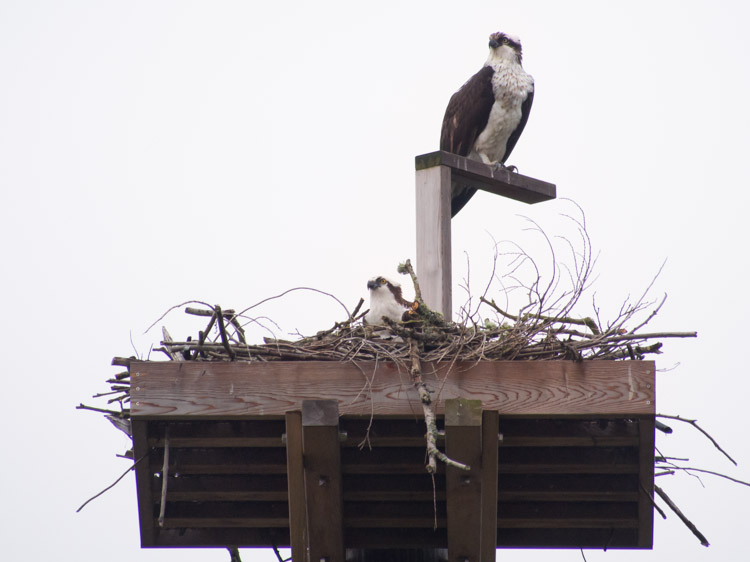
Osprey Pair on Platform – ©ingridtaylar
Nick Cave
Across the oceans, across the seas,
Over forests of blackened trees,
Through valleys so still we dare not breathe,
To be by your side.Over the shifting desert plains,
across mountains all in flames,
through howling winds and driving rains,
To be by your side.Every mile and every year,
For every one a little tear.
I cannot explain this, dear,
I will not even try.
Edited to add a few images from this year’s nesting season:

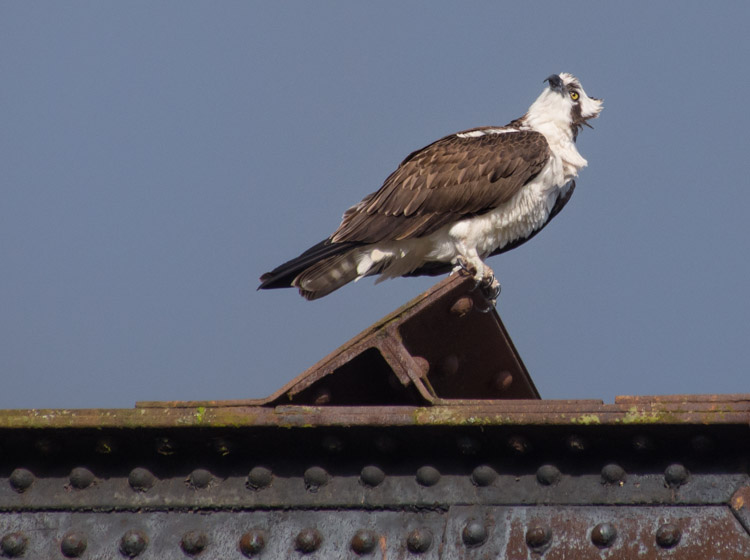
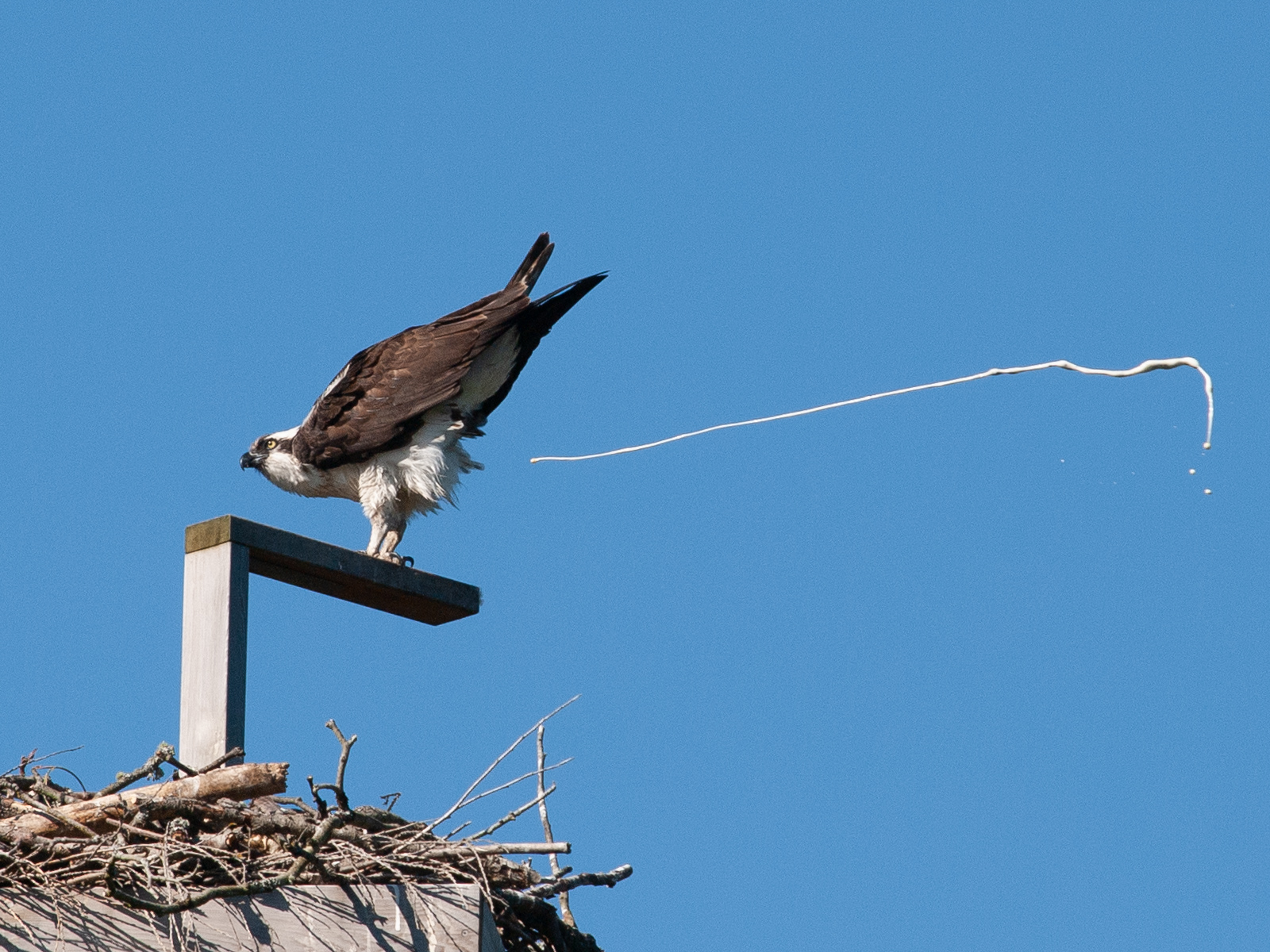
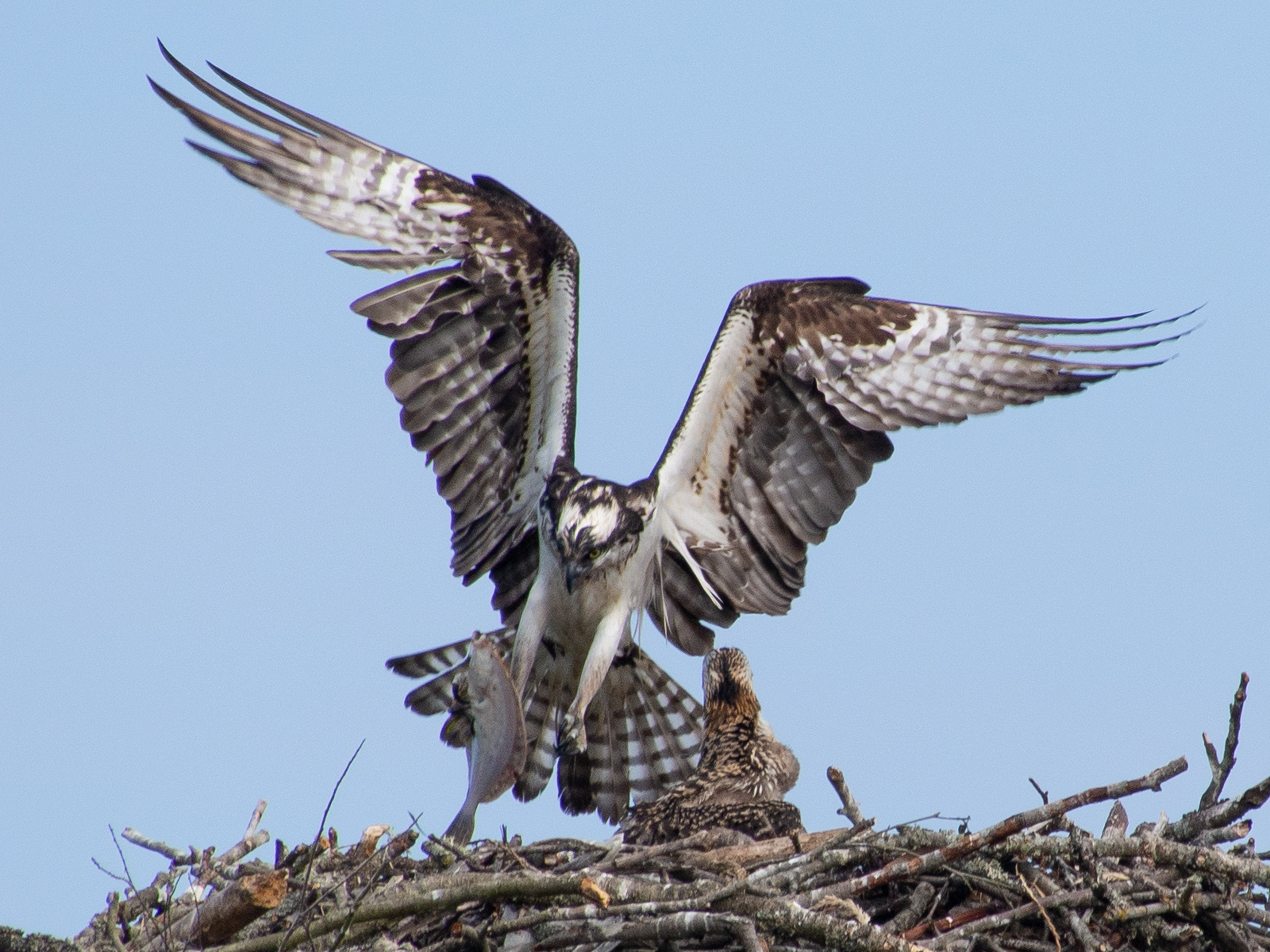
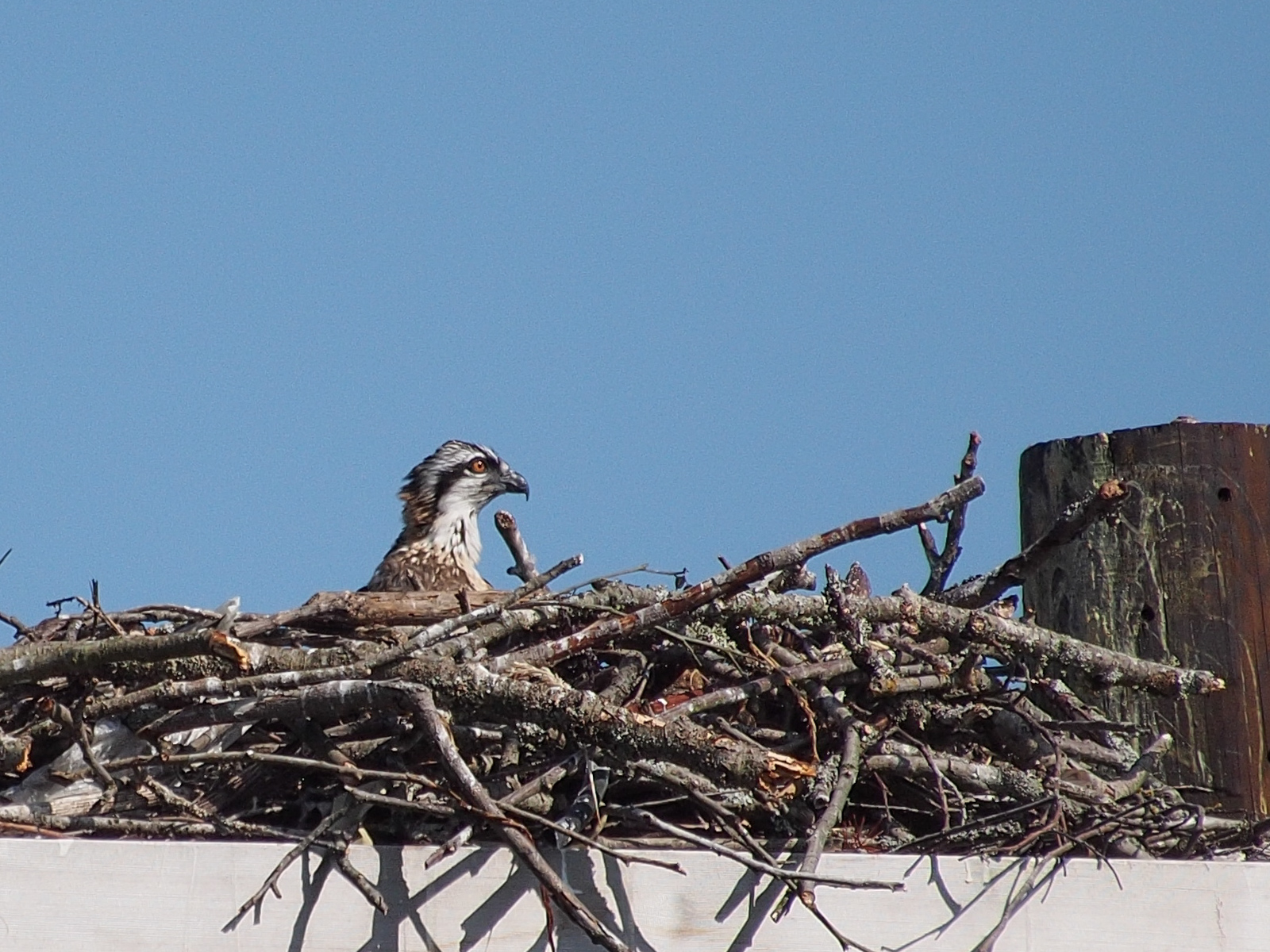
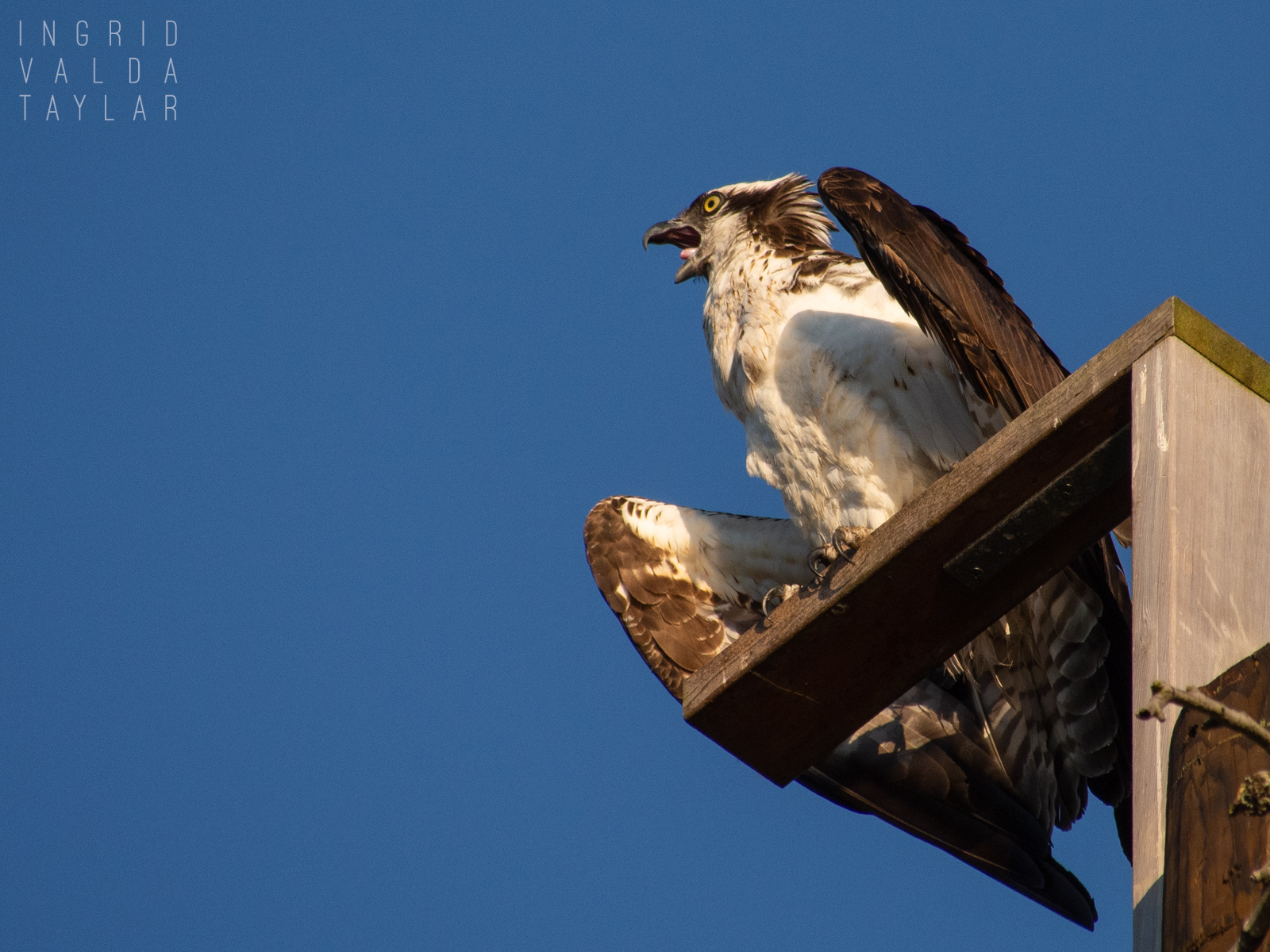
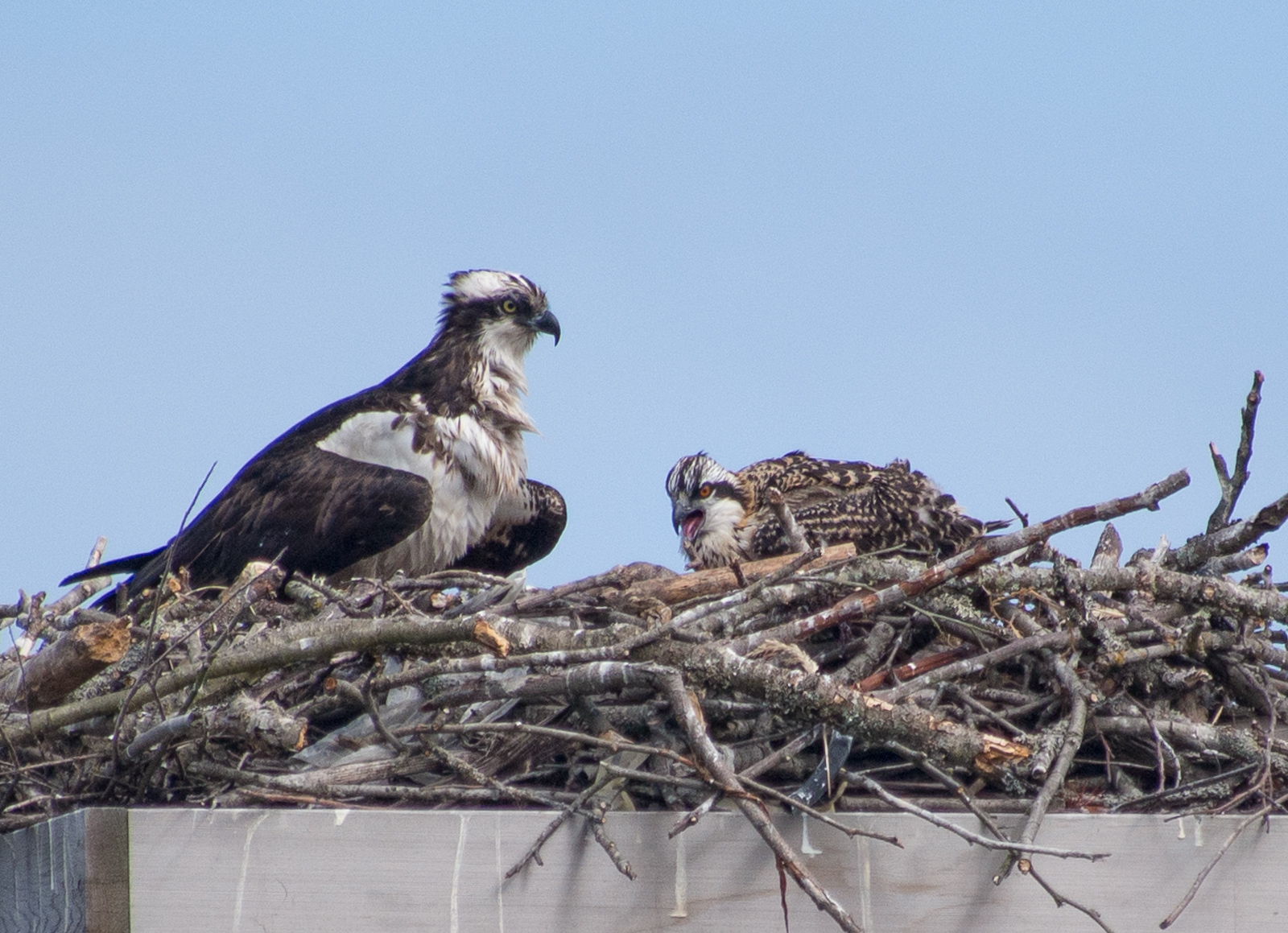
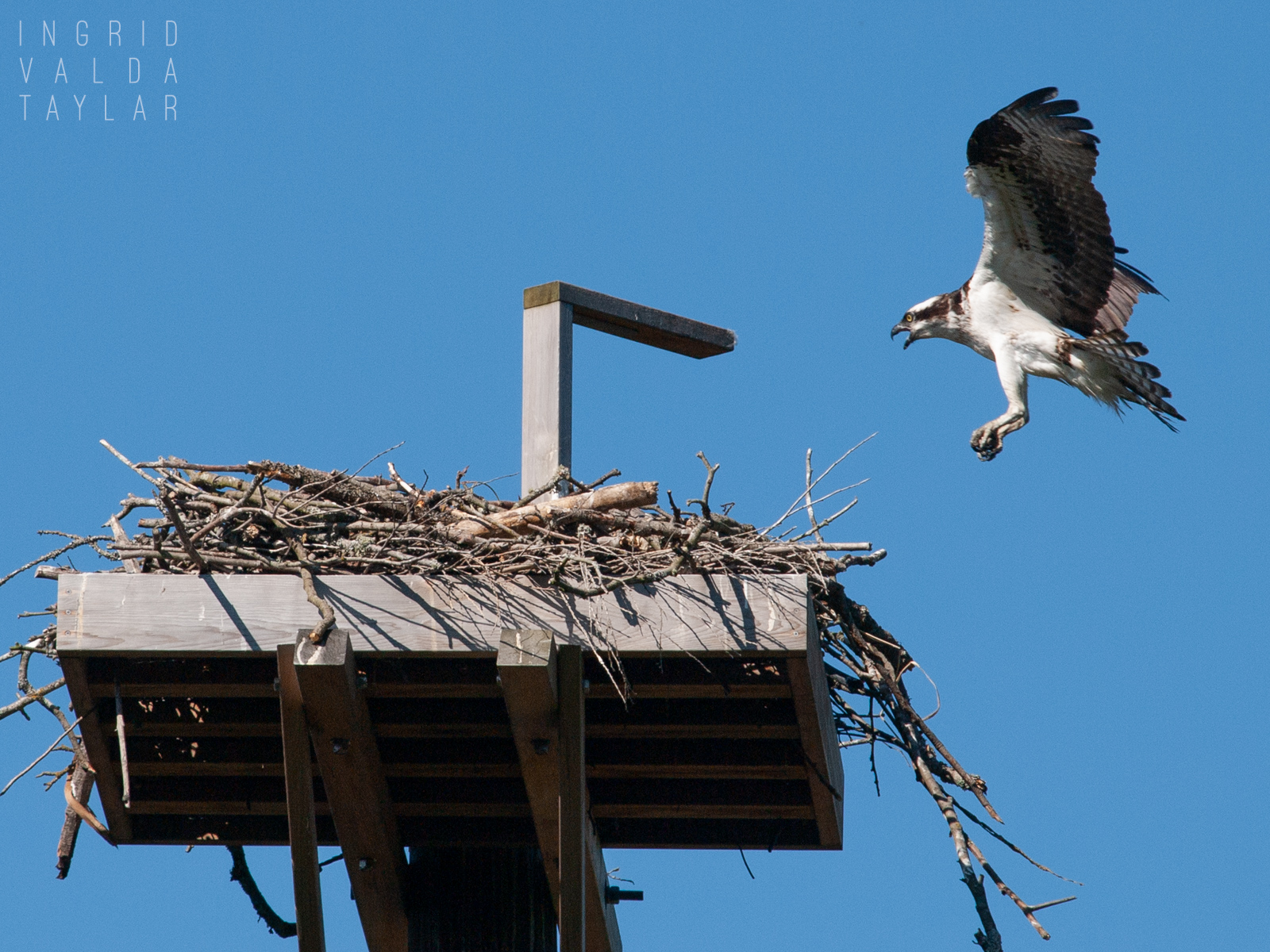
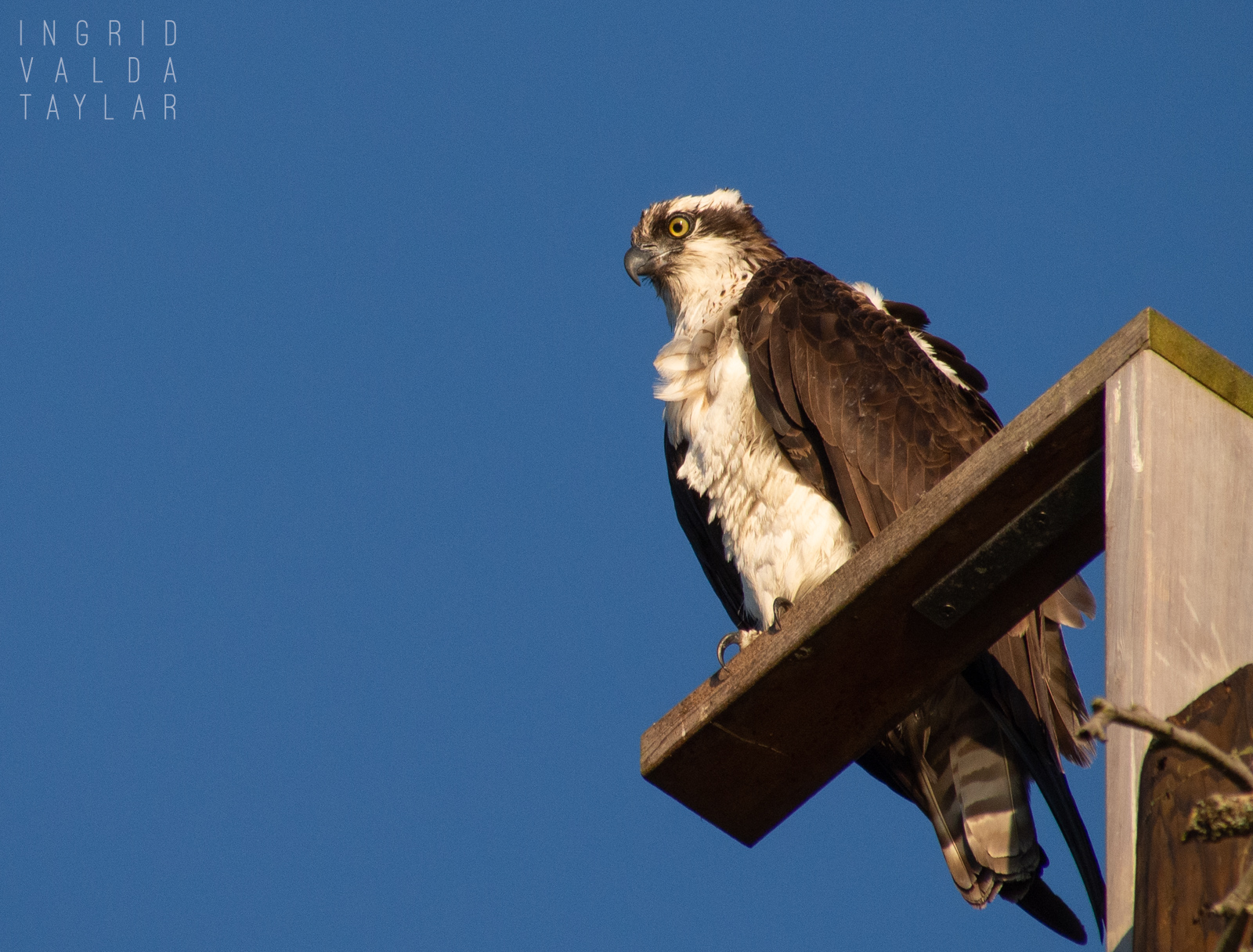
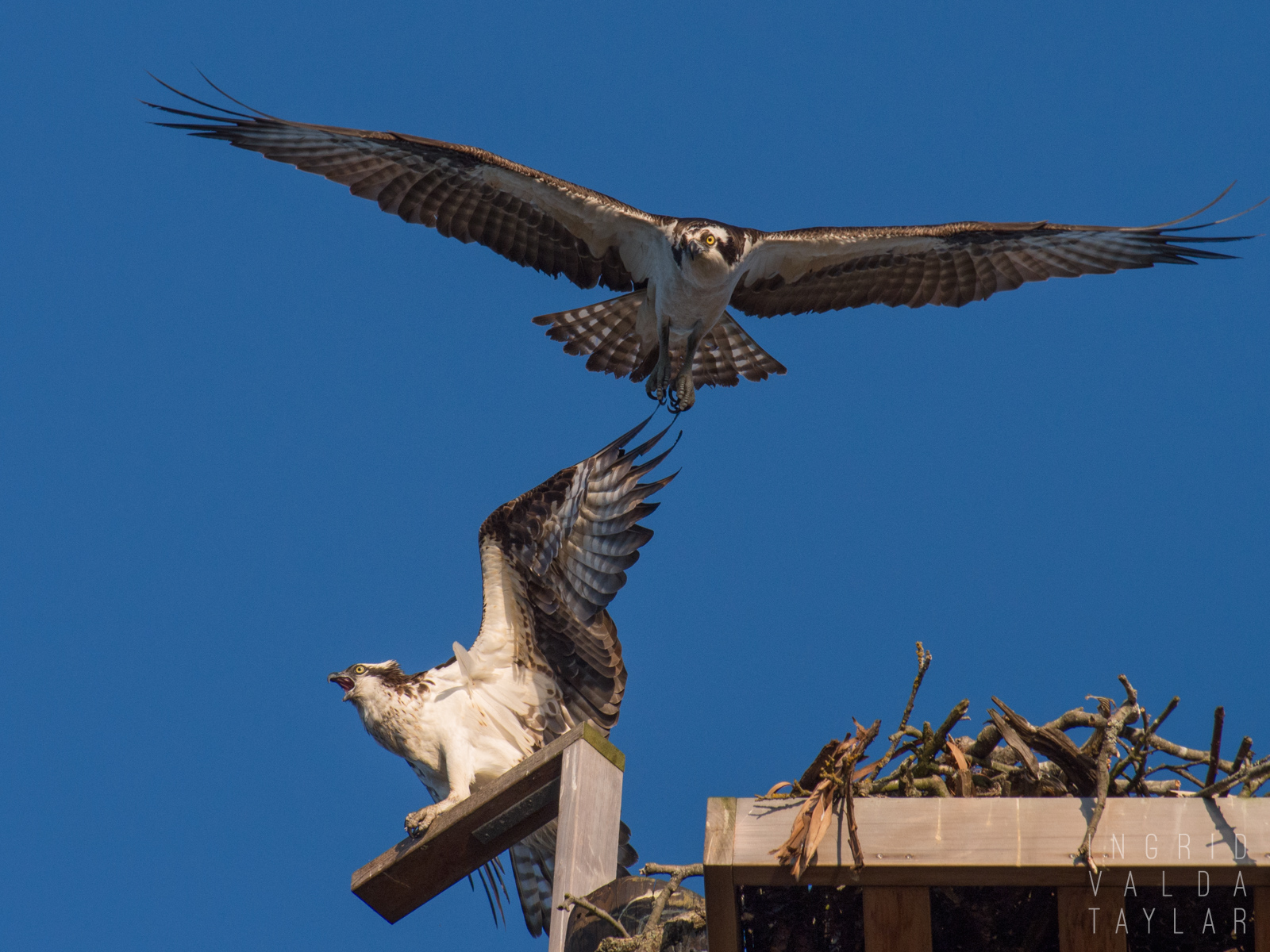
It’s great you have them available. I remember my frustration in Central Florida trying to photograph them and not being able to get close. It was an area full of lakes so apparently they had more nesting areas there. The also caught very big prey so they tended to retreat in hidden areas I didn’t have access to. That video is amazing.
Maria, I know what you mean because I didn’t have any such access in California. One of the platforms here is in a public park that’s quite popular in the summer, even though I’m still careful not to stay too long and point my camera at the nest. I have a few spots where I can take shots without being obtrusive.
I have similar emotions to yours regarding the return of migrating birds, Ingrid. We don’t have many Osprey but for me the species that really makes me think about the challenges of migration are the Swainson’s Hawks that are just now returning from South America. Such an impressive and perilous journey!
I quite enjoyed the clip.
Ron, “impressive and perilous” is precisely what it is! Perfect description.
Gorgeous ospreys and gorgeous video. Seeing these magnificent creatures makes me question the sanity of anyone who kills them FOR ANY REASON — meaning, there is, in my mind, NO legitimate reason. Just a web spun of self-deceit and gluttonous narcissism, to use a phrase I read tonight in an email sent to me by a friend.
It’s funny, CQ, I often wondered if being exposed to so much death in the context of the wild, would harden me the way it does some. I’ve found the opposite to be true: I feel even more poignantly the repercussions they endure. I think the more you become aware, the more difficult it is to compartmentalize the struggles of the “other.” But, the awareness has to involve understanding “who” they are, not just “what” they are in terms of conservation figures. It’s the “who” part that drives genuine caring, in my mind.
Yes, Ingrid. And the “who” part makes them seem less and less like “other” and more and more like “us” — all of us deserving of equal respect, consideration, justice, and compassion.
Last year I “discovered” (in plain sight) an Osprey nesting site near the Ballard locks. Is this the “public park” you visited? I’ve had my eye on the skies for the past few weeks looking for these beauties and haven’t seen a single one! Hoping I’ll have better luck in the following days…
Hi, Stella, and thanks for the comment! Yes, the Ballard Ospreys are wonderful to observe, I agree. Do you live in the neighborhood? The various local Osprey couples started coming back around the first of April, so two things are probably happening when you look for them: 1) One of the pair is out fishing, and 2) The second of the pair is likely incubating eggs. They hunker down flat on the nest while incubating, so they’re difficult to see in that pose.
(btw, even when locations are public, I’m still careful about specifically naming places, for the sake of the birds. Birders usually end up finding them through research anyway, so I figure I can help the birds out with a bit less publicity.
My partner and I have been looking around the Ballard locks for the gorgeous birds. We go out photo shooting as much as possible here and Montana. Would love to get more information on location on these platforms in Ballard.
Hi, Sharon – Thanks for the comment. At the time we were living in Seattle, there was an Osprey platform on top of the train bridge. They eventually dismantled that, and built a platform in Commodore Park. But, after we left (2015) I heard it was abandoned by the Osprey pair that was displaced from the train bridge. Apparently, there was some harassment of the Ospreys, being that close to the park. And I personally witnessed some drone harassment. I don’t know if other Ospreys have taken up residence there. The platform was (maybe still is) on the west side of the train bridge.
There were another three nests in Interbay, near Ballard, around the train yard. Again, I’m not sure if Ospreys are still using those. (I’m back in Northern California now.). They were not nearly as easy to photograph. You could not get the proximity to the birds and their activities. There was one above the train tracks, on a light stand, not far from Boxcar Alehouse. There was another on a light stand along the train tracks and Balmer Yard, at the very end of 21st Ave West in Magnolia. And yet another at the Port of Seattle which was inaccessible. But — the Osprey often fished at Smith Cove and the area near Palisade, also in Magnolia.
If you venture farther toward Renton, there used to be an Osprey nest along the Duwamish River/Peoples Park area, across from the Boeing building. I could photograph from across the river.
Do you check eBird for possible Osprey locations? I don’t know if the info at Osprey Watch is kept current (https://www.osprey-watch.org/). I used to contribute to their resources.